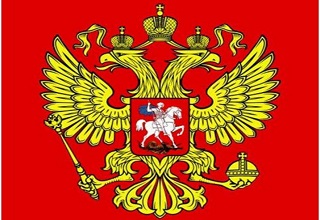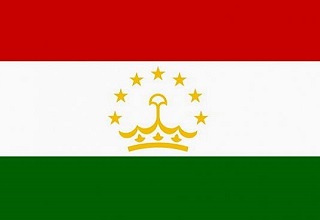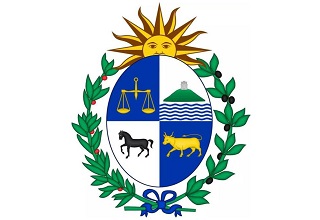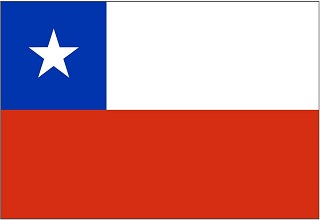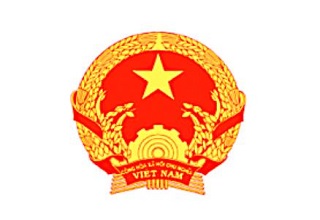Regarding the Inspection and Quarantine Requirements for Mango Fruits from Ecuador to China
In accordance with the regulations of China Customs and the Ecuadorian Bureau of Plant and Animal Health Control regarding plant quarantine requirements for the import of fresh mangoes from Ecuador into China, effective immediately, the import of fresh mangoes from Ecuador that meet the following requirements is permitted.
I. Inspection and Quarantine Basis
(1) Biosafety Law of the People's Republic of China;
(2) Law of the People's Republic of China on Import and Export Animal and Plant Quarantine and its Implementing Regulations;
(3) Food Safety Law of the People's Republic of China and its Implementing Regulations;
(4) Measures for the Supervision and Administration of Inspection and Quarantine of Imported Fruits;
(5) Protocol between the General Administration of Customs of the People's Republic of China and the Bureau of Plant and Animal Health Control of the Republic of Ecuador on Plant Quarantine Requirements for the Import of Fresh Mangoes from Ecuador into China.
II. Permitted Import Commodity Names
Mango, scientific name Mangifera indica, English name Mango.
III. Permitted Origin
Mango-producing areas in Ecuador.
IV. Registration
Mango orchards, packaging plants, and heat treatment facilities exported to China must be audited by the Ecuadorian Bureau of Plant and Animal Health and approved for registration by China Customs. Registration information should include name, address, and identification code to facilitate accurate traceability in the event that exported goods fail to comply with the relevant provisions of this announcement. Before trade commences, the Ecuadorian Bureau of Plant and Animal Health must provide the registered list to China Customs, which will be published on the General Administration of Customs website after review and approval by China Customs.
V. List of Quarantine Pests of Concern to China Customs
1. Aleurodicus dispersus
2. Aleurothrixus floccosus
3. Anastrepha fraterculus
4. Anastrepha obliqua
5. Anastrepha serpentina
6. Anastrepha striata
7. Ceratitis capitata
8. Ceroplastes spp.
9. Nectria rigidiuscula
10. Pseudococcus spp.
11. Selenaspidus articulatus
VI. Pre-Export Management
(I) Orchard Management
1. Mango orchards exporting to China should establish a comprehensive quality management system and traceability management system under the supervision of the Ecuadorian Agency for Plant and Animal Health Control, implement Good Agricultural Practices (GAP), maintain sanitary conditions in the orchard, such as ensuring no nearby pollution sources that could affect fruit production and promptly removing fallen and rotten fruit. They should also implement Integrated Pest Management (IPM), including pest monitoring and surveys, physical, chemical, or biological pest control, and agricultural practices. Fallen fruit must not be mixed with commercial fruit during harvest.
2. Mango orchards exporting to China should conduct pest monitoring and integrated management for quarantine pests of concern to Chinese Customs under the supervision of the Ecuadorian Agency for Plant and Animal Health Control. Pest monitoring and control should be conducted under the guidance of professional technicians, who should receive training from the Ecuadorian Agency for Plant and Animal Health Control or its authorized agencies.
3. All mango orchards exporting to China should maintain pest monitoring and control records and provide them to Chinese Customs upon request. Control records should include detailed information on the name, active ingredient, application date, and concentration of all chemical agents used during the growing season.
4. The Ecuadorian Plant and Animal Health Control Agency (SAPHA) shall conduct fruit fly surveillance for Anastrepha spp., Anastrepha spp., Anastrepha spp., Anastrepha spp., and Mediterranean fruit flies annually during the mango growing, harvesting, and processing seasons in accordance with international phytosanitary measures in orchards and packaging plants located in mangoes destined for China. If the average daily count of these fruit flies caught per trap exceeds 0.14, mangoes from the orchard in question cannot be exported to China during that production season.
(II) Packaging Plant Management.
1. The processing, packaging, storage, and shipping of mangoes destined for China must be conducted under the quarantine supervision of the SAPHA or its authorized officials.
2. Prior to packaging, mangoes destined for China must undergo selection, washing, and fungicide soaking to remove pests and foreign matter, ensuring that they are free of quarantine pests of concern to Chinese Customs, as well as insects, mites, diseased fruit, mollusks, plant debris, and soil.
3. Mangoes that have been hot-water treated and packaged should be stored in clean, hygienic, insect-proof cold storage to prevent reinfestation by pests.
4. During the production and export season for mangoes exported to China, the Ecuadorian Plant and Animal Health Control Agency shall conduct daily pest inspections in the handling, processing, packaging, and storage areas of the packing plant. If live pests are found, the area shall be immediately quarantined. If live adult fruit flies are found during the packaging process, all mangoes placed in the packaging area during that period shall not be exported to China.
(III) Packaging Requirements
1. Packaging materials shall be clean, hygienic, unused, and meet relevant Chinese plant quarantine requirements. If wooden packaging is used, it must comply with the requirements of International Standard for Phytosanitary Measures No. 15 (ISPM 15).
2. Each packaging box shall be labeled in English with information such as the mango variety, origin, orchard, packing plant, and hot-water treatment facility. Each box shall be labeled "输往中华人民共和国" or "Exported to the People's Republic of China" in either Chinese or English.
3. Mangoes imported to China that have passed quarantine inspection must be transported in complete and clean containers, and the corresponding containers must be sealed by the Ecuadorian Plant and Animal Health Control Bureau. When the goods arrive at the Chinese entry port, the containers and the seals of the Ecuadorian Plant and Animal Health Control Bureau must be intact.
(IV) Quarantine treatment requirements.
1. Mangoes imported to China must be treated with hot water under the supervision of the Ecuadorian Plant and Animal Health Control Bureau in a treatment facility registered by the Ecuadorian Plant and Animal Health Control Bureau and approved by the Chinese Customs before export. The technical indicators are as follows:
(1) The water temperature for hot water treatment of mangoes imported to China must be 46.1°C or above, and the treatment time starts from the time the water temperature reaches 46.1°C for 5 minutes. The fruit must be immersed below 10.2 cm above the water surface.
(2) The duration of treatment depends on the weight of the fruit being treated. For fruits less than 500 grams, the treatment time shall not be less than 75 minutes; for fruits between 500 grams and 650 grams, the treatment time shall not be less than 90 minutes; for fruits greater than 650 grams, the treatment time shall not be less than 110 minutes.
(3) If the fruit needs to be cooled after hot water treatment, the hot water treatment time shall be extended by 10 minutes accordingly, and the mangoes shall be placed at room temperature for 30 minutes. The temperature of the cooling water shall not be lower than 21.1°C.
2. Hot water treatment is a mandatory quarantine treatment measure and must comply with the hot water treatment requirements for mangoes exported to China (see attachment). Every year before treating mangoes exported to China, the Ecuadorian Plant and Animal Health Control Agency shall test the hot water treatment facilities to be used and confirm that the treatment facilities are operating normally.
3. After heat treatment, quarantine officers of the Ecuadorian Plant and Animal Health Control Agency must dissect the fruits for inspection, with a dissection rate of 1%. If live fruit fly larvae are found, the batch of mangoes shall not be exported to China.
(V) Pre-export inspection and quarantine.
1. The Ecuadorian Plant and Animal Health Control Agency shall conduct pre-export quarantine on mangoes and containers carrying mangoes for export to China to ensure that they are free of quarantine pests of concern to Chinese Customs.
2. If live quarantine pests, plant residues, or soil of concern to Chinese Customs are found, the entire shipment shall not be exported to China.
(VI) Phytosanitary Certificate Requirements.
1. For shipments that pass quarantine inspection, the Ecuadorian Plant and Animal Health Control Agency shall issue a phytosanitary certificate in accordance with International Standard for Phytosanitary Measures No. 12 (ISPM 12), indicating the heat treatment temperature, duration, date, and container seal number of the mangoes, and the following additional declaration: "This consignment complies with requirements specified in the Protocol of Phytosanitary Requirements for Export of Fresh Mango Fruits from Ecuador to China, and is free from quarantine pests of concern to China."
2. The issued phytosanitary certificate shall be accompanied by a copy of the hot water treatment temperature record and probe calibration report for the mangoes, stamped and confirmed by the Ecuadorian Plant and Animal Health Control Agency.
3. Before the project begins, the Ecuadorian Agency for Plant and Animal Health Control shall provide a sample of its plant quarantine certificate to China Customs for verification and record-keeping.
VII. Entry Inspection and Quarantine and Handling of Non-Compliant Products
Upon arrival of mangoes imported into China at the Chinese port of entry, China Customs shall conduct inspection and quarantine in accordance with the following requirements.
(I) Verification of Relevant Certificates and Labels
1. Verify whether the imported fruit has obtained the "Entry Animal and Plant Quarantine Permit."
2. Verify whether the plant quarantine certificate complies with the provisions of Article 6, paragraph (f) of this Announcement.
3. Verify whether the labeling on the packaging box or wooden packaging complies with the provisions of Article 6, paragraph (c) of this Announcement.
4. Verify the hot water treatment temperature record and probe calibration report signed by the Ecuadorian Agency for Plant and Animal Health Control.
5. Verify whether the container seal is consistent with that indicated on the plant quarantine certificate.
(II) Entry Inspection and Quarantine
1. Mangoes imported into China shall enter the country from ports and airports approved by China Customs for the import of fruit.
2. Imported mangoes will be subject to inspection and quarantine in accordance with relevant laws, administrative regulations, and rules. Mangoes that pass inspection and quarantine will be allowed into the country.
(III) Disqualification Handling
1. If mangoes are found to originate from unapproved orchards, packaging plants, or heat treatment facilities, the shipment will not be allowed into the country.
2. If a container is found to not meet Chinese plant quarantine requirements, it will be subject to quarantine. If the mangoes are found to not meet the relevant provisions of this Announcement, the shipment will not be allowed into the country.
3. If live quarantine pests listed in Article 5 of this Announcement are found, the shipment will be returned or destroyed. If live fruit fly larvae are intercepted, Chinese Customs will notify the Ecuadorian Agency for Plant and Animal Health Control within 15 days and suspend the import of Ecuadorian mangoes into China until the Agency investigates the cause, takes effective measures, and Chinese Customs deems the risk effectively controlled.
4. If any non-compliance with Chinese food safety laws, regulations, national standards, or requirements is found, the shipment will be returned or destroyed.
5. If any of the above non-compliance is found, Chinese Customs will immediately notify the Ecuadorian Agency for Plant and Animal Health Control and, depending on the circumstances, suspend mango imports from the relevant orchards and packinghouses for this export season. The Ecuadorian Agency for Plant and Animal Health Control will investigate the cause of the non-compliance and implement corrective measures to prevent similar incidents from recurring. Chinese Customs will decide whether to lift the suspension based on the results of the Ecuadorian Agency for Plant and Animal Health Control's rectification efforts.
GACC
July 25, 2025
Heat treatment requirements for mangoes exported to China
I. Heat treatment site requirements
1. Heat treatment facilities should be located in a fruit packaging factory registered by Ecuador and approved by China.
2. The packaging plant and surrounding areas must be in good sanitary condition, with relatively independent receiving quarantine areas, hot water treatment areas, and pest-proof packaging and refrigerated storage areas. The latter two areas must be kept clean, sanitary, and pest-free at all times.
3. During the mango export season to China, the processing, post - processing storage and packaging areas of the packaging plant should be effectively enclosed (i.e. not open to the outside).
4. The main entrances to the packaging and storage areas must be double-door systems with air curtains on the outside. The inner door can be an insect-proof screen with 30 mesh per inch or more , or a vertical transparent plastic strip curtain.
5. Windows, vents, and other potentially exposed areas in insect-free areas of the packaging plant should be fitted with screens with a mesh size of 30 or more per inch.
II. Requirements for heat treatment facilities
1. Hot water treatment facilities for mango export to China must be registered with Ecuador and included in the list of approved facilities on record in China before the export season.
2. Heat treatment facilities should have devices and functions for circulating water, heating water temperature, automatic temperature control, and accurate display and recording of water temperature and probe temperature. They should operate normally and pass the test before being officially used for treatment.
3. The heat source of the facility is automatically controlled to ensure that the water temperature is kept constant at 48 °C or above during the treatment process , and the entire treatment process can be carried out continuously and stably.
4. The configured temperature recorder can display, record and print the water temperature, probe temperature and the start and end time of the entire treatment process in real time, accurately and tamper-proof manner. At the same time, it must also have a backup power supply.
5. Each hot water treatment tank should be equipped with no fewer than eight calibrated water temperature probes located at different locations, and the mangoes being treated should be submerged below 10.2 cm above the water surface.
6. The temperature recorder should automatically and unalterably record the temperature of all probes once or more every 2 minutes. The recorded display should meet the accuracy required by the probes. If the treatment facility is a continuous system, the temperature recorder should be able to operate continuously for 12 hours.
7. The offset scale of the temperature record plot should not be less than 5 mm/ °C , and the printing speed should not be less than 30.5 cm / hour; the printed temperature record should correspond to the time and temperature recorded by each probe.
III. Temperature probe requirements
1. The temperature probe used in the treatment must have an accuracy of ± 0.15 °C and a calibration error of no more than ± 0.4 °C.
2. During the mango processing period, the Ecuadorian side shall calibrate all probes according to the method approved by the Chinese side every day before the formal start of the processing.
3. After the probe calibration is completed, the Ecuadorian side will issue a probe calibration report.
4. When abnormal temperature recording occurs or the temperature recorder is replaced, the temperature probe should be recalibrated.
